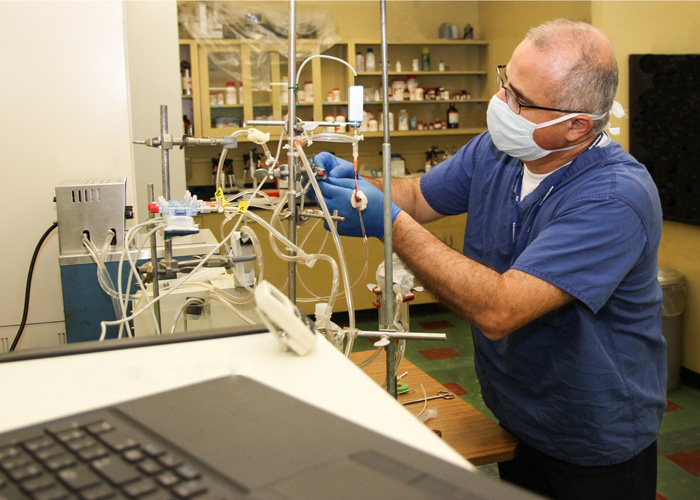Wagner Dissertation Abstract
Identification of Neural Deficits Associated With Upper
Extremity Dysfunction in Persons With Multiple Sclerosis
Dissertation Date: November 13, 2024
Multiple Sclerosis is a demyelinating neurodegenerative disease prevalent in
approximately 2.8 million people worldwide. The heterogeneous presentation of
symptoms arising from demyelination and lesions within the central nervous system
creates challenges in understand how underlying pathophysiology is related to disabilities common in persons with Multiple Sclerosis (PwMS). Upper extremity dysfunction,
present in up to 80% of PwMS, makes it difficult to achieve daily life activities such as
brushing teeth or working on a computer. Currently there is little consensus as to how the underlying functional neural interactions manifest as upper extremity dysfunction in
PwMS. This dissertation aims to better understand the disruption in neural pathways
which mediate sensorimotor control during visually guided reach to identify common
deficits across levels of upper extremity impairment in PwMS. To do this, PwMS and
unimpaired adults completed a visually guided reach task with electroencephalography
collected simultaneously. The specific aims of this study were to: 1) Determine how
sensorimotor control is altered during goal-directed movement in people with Multiple
Sclerosis; 2) Identify how increased visual feedback processing delays in people with
Multiple Sclerosis are related to cortical-cerebellar functional connectivity; 3)
Characterize how Multiple Sclerosis impacts the brain networks that mediate visually
guided reach. We show that increased visual response delays differentially impact the
neural response in PwMS with more and less impairment via decreased amplitude and
latency respectfully. During movement phases more reliant on visual feedback
processing, increased functional connectivity of sensory processing regions is common
across PwMS but those with greater motor impairment also have motor processing
correlates to behavioral measures of dysfunction. Finally increased demand on sensory
processing regions throughout movement help mitigate motor deficits for less impaired
PwMS while those with more impairment require additional recruitment from sensory,
motor, and frontal regions to complete a visually guided movement. These results can be used to facilitate future rehabilitative efforts in reducing motor impairments in PwMS.
Return to Dissertation Schedule


